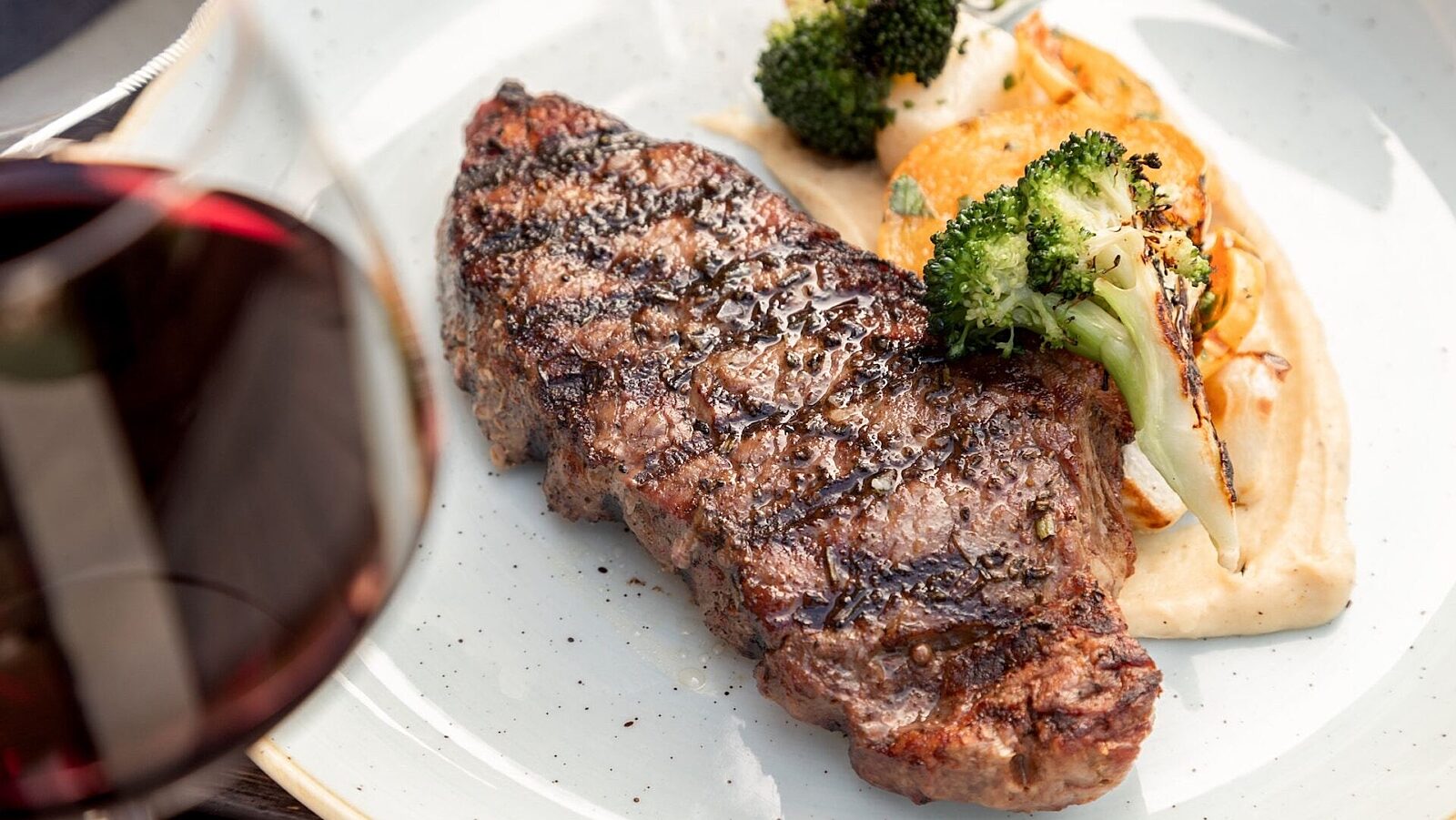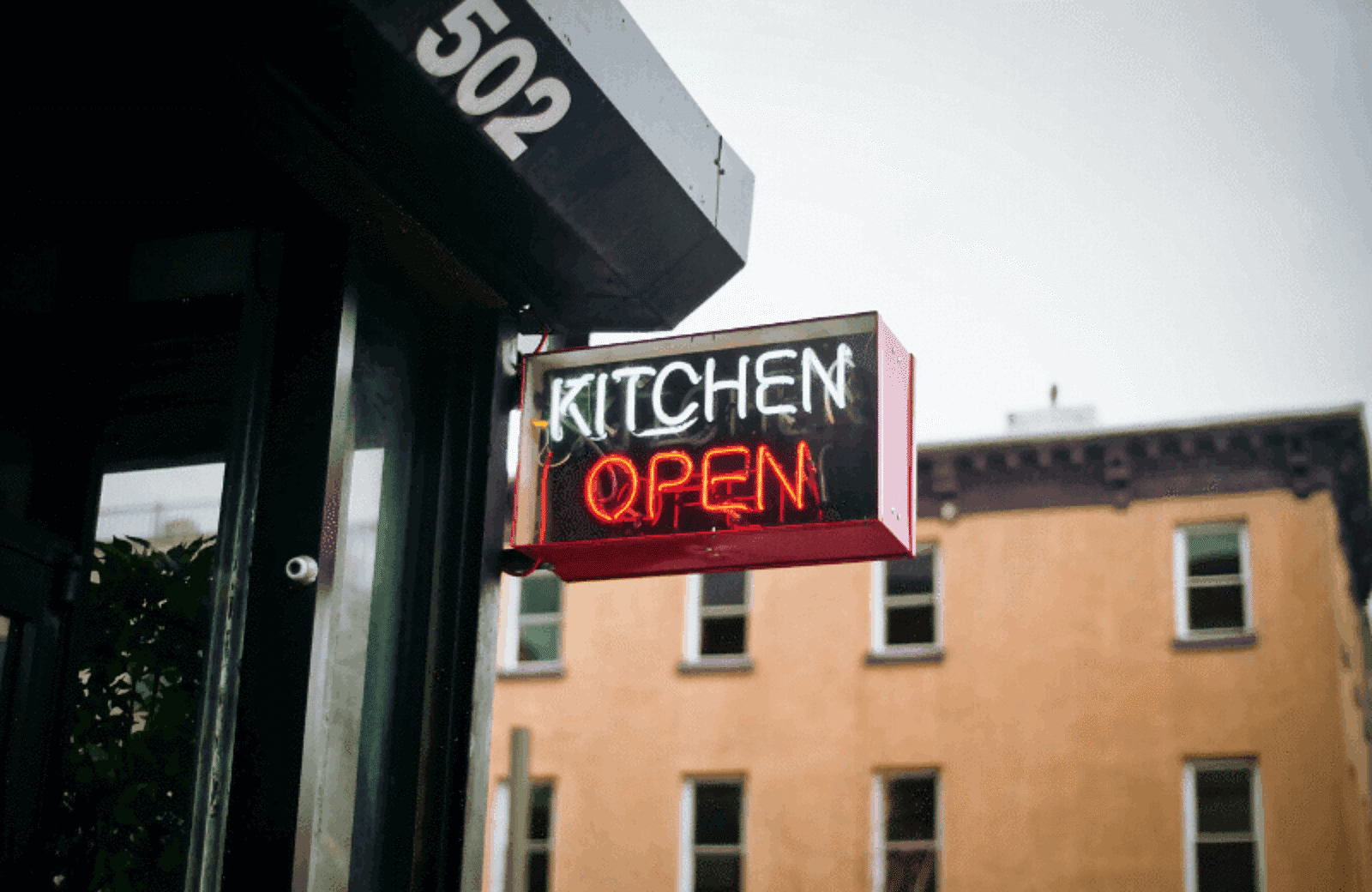
How to Open a Steakhouse: Starting a Steakhouse Checklist
Looking for how to open a steakhouse? We’ve got the answer with our startup checklist.
Grace JidounAuthor
How to Open a Steakhouse: Starting a Steakhouse Checklist
America’s love affair with steak began nearly two centuries ago when the iconic Delmonico’s opened its doors in New York City — and our passion hasn’t waned. Today, the premium steakhouse industry has a $6.7 billion market size and is currently riding the wave of a post-pandemic chophouse resurgence. It turns out that after eating in for so long, customers want to indulge when dining out and treat themselves to a filling meal in a nice ambiance. That said, steakhouses comprise a small portion of the $997 billion overall restaurant industry, meaning there is ample room for growth and opportunity.
For chefs and restauranteurs interested in opening a steakhouse it’s a great time to jump in. A longtime favorite for special occasions, steakhouses now come at all price points and vary from old-school Midwestern-style supper clubs and country-wide chains to modern beef palaces with innovative sides. One thing is for certain: richly marbled steaks are one of life’s great pleasures, and steakhouses will never fail to draw in customers.
Steakhouses have proved to be one of the most resilient sectors of the industry. If opened correctly and properly managed, your steakhouse promises to be an enduring and profitable business venture. Here, we share how to open a steakhouse with expert insight and resources.
Kitchen Opening and Closing Checklist
Ensure your back of house runs like a well oiled machine with these customizable kitchen opening and closing checklists.

Choose your concept
You’ll make many key decisions in your restaurant journey, but creating a brand and choosing a name is perhaps the hardest. When you envision the steakhouse of your dreams, what do you see? Do smooth jazz riffs float over red leather booths? Does your steakhouse have a hunting lodge atmosphere with hefty Angus chops on the menu? Or maybe it’s upscale and chic, with a glass dry-aging chamber and deep wine cellar. To begin, write down your restaurant’s mission, vision, purpose, and core values. Then it’s time for a bit of market research: who are your customers, and what is the local competition like?
Once you’ve honed your vision, the next step is to pick a succinct name and an eye-catching logo. You’ll want something memorable to help you stand out but that also makes sense with your overall concept. We’ve gathered 118 cool restaurant names and 20 creative and well-designed logos to get you started.
At this point, you’ll also want to dial in the type of cuisine you’re serving. If there were just one way to cook a steak, dining out would be pretty dull. While there’s comfort in the classic chophouse, plenty of proprietors have pushed the envelope when it comes to steaks, incorporating international flavors, experimenting with aging, and sourcing from different breeds. While you don’t need an exact menu at this point, you should have a solid culinary vision.
Set up your business structure
You should start thinking about an organizational structure early on, long before opening your restaurant, as the decision can affect your business in significant ways — including taxes and personal liability. A business structure defines who owns your steakhouse and how the profits are distributed. Here are the most common types:
Sole proprietorship – The most straightforward way to structure a business, a sole proprietorship, is when one person owns a restaurant and is liable for all financial obligations and debts.
Partnership – This is when two or more people own the business. There are two types within this category, and “general partnership” is the most common when all partners are involved in the day-to-day operations. In a limited partnership, the second type, one or more partners are “silent” investors or not involved in the daily management.
Corporation – Also known as a C-Corp, this structure creates a business entity independent of its owners. While it’s more complex and paperwork-intensive than a partnership, this type is often favored by those who need to raise funds.
LLC – This hybrid structure brings together features of partnerships and corporations.
Write your steakhouse’s business plan
Kicking off a new restaurant venture with a strong business plan will put you far ahead of the curve. In a nutshell, this document will outline your short- and long-term goals, your strategies for success, and any obstacles you need to overcome. These days, a business plan is necessary to attract potential outside investors, but beyond that, it will provide you with a solid blueprint to follow during the often-tumultuous startup process. Don’t know where to start? Find templates and expert advice in our guide, How to Write a Restaurant Business Plan.
Restaurant Business Plan Template
No matter where you’re at in your restaurant ownership journey, a business plan will be your north star. Organize your vision and ensure that nothing is overlooked with this free template.

Figure out funding
Good news, there are more options for restaurant financing than ever before. Banks? They’re just the beginning. The number one way to maximize your odds of securing funding is to have a thorough business plan. Here’s a tip for writing it: when it comes to the money — like operational and startup costs — don’t leave anything out. Include detailed information about fixed and variable costs and what you’ll need to break even. If your business plan is vague or peppered with “fuzzy math,” investors will fill in the blanks with their own imaginations, and you don’t want that.
Here are three common financing options:
Loan options
Bank loans are the most traditional option — sometimes requiring collateral — and come in many forms (short and long-term). They can be used for various expenses, from working capital to commercial real estate. Most major banks will offer the option to apply for a Small Business Administration (SBA) loan, which is geared toward entrepreneurs and has stricter qualification requirements. Despite that, SBA loans have enticing loan terms and unique options for minority business owners, and the government will guarantee a large portion.
Investors
Angel investors, friends and family, and venture capitalists are the three primary types of investors, and each tends to shine during different stages of your restaurant’s development. Friends and family are typically best for supplying seed money during the initial stages since they’re not accredited. Angel investors often swoop in during early rounds of investments, and venture capitalists tend to fund after the restaurant has proven itself and there’s less risk. Of course, this is just a general rule of thumb and will vary depending on your unique situation.
Crowdfunding
The rise of online marketplaces provides more avenues to connect with funders. Peer-to-peer lending sites act as a sort of middleman, connecting you to small business investors for a fee. Crowdfunding is a variation on this, opening up investment opportunities to the general public or anyone interested in your idea. The difference with crowdfunding is the money isn’t a loan but a payment for something from your restaurant (read: equity in your company or early access to a product or service).
Restaurant Cost Control Guide
Use this guide to learn more about your restaurant costs, how to track them, and steps you can take to help maximize your profitability.

Follow the legal requirements
Tax identification
This is like a social security number for your business. Just like every U.S. citizen has an SSN, every business must register for a tax ID (also known as an EIN) with the IRS. You’ll need one to file business-related taxes and hire employees.
Licenses and permits
As soon as you’ve secured a tax ID, the next step is to get the ball rolling on the licenses and permits needed to operate a steakhouse. While getting a tax ID is relatively painless, the permit process can take between 30 and 90 days and cost hundreds of dollars in fees. Requirements for each state and county vary, but to get a good sense of what’s in store, read our license and permit overview, which explains how to tackle the process.
Insurance
Fire, knives, smoke, long work hours: all restaurants are risky business. A kitchen fire could damage your grill, forcing you to shut down for weeks. A customer could choke on a piece of steak and sue you for damages. From commercial auto insurance to equipment breakdown coverage, there’s a policy for just about every aspect of the biz, so finding the right combination may require a bit of legwork. Some types may even be required by law in your state.
Accounting
You can’t bask in the glory of your steakhouse success if you don’t track the numbers. Restaurant accounting is a broad term that encompasses nearly all financial matters related to your restaurant, from accurately recording daily transactions to defining budgets and income benchmarks, and is an essential component of your business.
Choose a location
Just like the old adage says, the three most important factors in determining a desirable property: location, location, location. Visibility, parking, space size, affordability, and crime rates are all things to consider when choosing your restaurant site. In developing your concept and business plan, you’ll need to decide whether to lease a commercial space, buy an existing restaurant, or build it from the ground up.
According to a survey of 496 restaurants across the country conducted by RestaurantOwner.com, the median cost of monthly rent is $5000, making it the most affordable option by far and a great choice for those with limited startup capital. But if you have the money to invest, buying or building a property has its upsides: you can customize it to your heart’s content. Perhaps more importantly, it could become a great asset for your restaurant if it appreciates. If you decide to close your steakhouse or change locations, you can rent out the space and add another revenue stream to your growing entrepreneurial empire.
Design your layout
It’s not just the steak, it’s the sizzle. Steakhouses are known for having “atmosphere” — whether they’re bringing mid-century Mad Men vibes or going fun and festive. While it’s tempting to start shopping stat, your floorplan should be the first thing on your design to-do list. Many states require you to submit a layout as part of your steakhouse’s business plan before issuing a new restaurant construction permit. You’ll find inspiring floorplans aplenty and other bits of wisdom in our Restaurant Floorplan design guide.
Design
The most successful steakhouses are defined as much by mood as they are by the menu. Begin by thinking about the kind of experience you want for your customers, and then take a comprehensive look at your property and floorplan — the front of the house, the kitchen, the bathrooms, the parking lot, and the entrance. Next steps involve working with your local planning and building departments, seeking help from professionals, and considering feasibility and costs.
Tech
Consider how to incorporate restaurant tech into your design plan. The customer side is bursting with innovations, from digital menus to contactless or touch-screen POS payment systems. Even high-end restaurants like steakhouses are pumping up online ordering options and designing specific areas for online pick-ups. In the kitchen, more and more restaurants are rolling out digital displays that help chefs keep track of orders.
Equipment
Many practicalities will affect your equipment choices, including your kitchen layout, the size of your kitchen staff and their cooking techniques, the variety of dishes on your menu, and, last but not least, your budget. Whether you buy or rent equipment or have a large or small restaurant, you’ll want enough storage and workspace for everything to fit comfortably.
Build your menu
The average customer probably doesn’t realize how much research went into that new chile-spiked creamed corn side. Most restaurant dishes are relentlessly tested and retested and then analyzed using a technique called menu engineering, which is the practice of assessing dishes for popularity and profitability. The data is then used to guide key decisions around pricing and marketing.
Rising inflation and spiking food costs have complicated matters, making it ever more difficult to optimize menus. The long-established practice of focusing on high-profit foods doesn’t exactly cut the mustard these days. Creating a profitable menu in a volatile market requires some insider knowledge, which we share in our guide to successful menus (along with a nifty profit margin calculator).
Fine Dining Menu Templates
Use these fine dining menu templates as a starting point for your menu design or to give your menu a refresh.

Choose your suppliers & vendors
Once you’ve analyzed your menu for profitability (and deliciousness, of course!), you can begin to determine which suppliers and vendors will fit within your grand scheme. Ideally, freshness is best, but flying oysters in from France’s Belon River may not be in the cards. The choice ultimately comes down to local vs. large suppliers in a balancing act of quality, price, convenience, and customer appeal.
Hire staff
How do you hire the right people for the job? Attracting high-quality employees is always challenging, especially in a tight labor market. Toast recently surveyed restaurant employees to find out what makes them tick, what motivates them to work in the industry, and how they job hunt (most new employees find jobs from friends and social media).
You’ve got a lot on your plate (literally) when launching a steakhouse. Perfecting your interviewing techniques may not be at the top of your list. But if you ask the right questions and come prepared, it can make the entire process much smoother and lead you to high-quality employees. Since so much online advice is for the job seeker, we created an interviewing guide just for restaurant operators, including dozens of clever questions to ask your candidates.
Create your marketing plan
New restaurants don’t survive on word-of-mouth alone. A comprehensive marketing plan is crucial to spreading the word about your fabulous steakhouse to new customers. It can also strengthen bonds with existing customers, helping to create a loyal fanbase.
Whether you do some or all of the strategizing yourself or hire marketing professionals all the way, it’s important to allot money for marketing in the startup phase and include it in your budget as an ongoing expense.
Plan your soft opening/grand opening
Here’s the fun part of your steakhouse adventure — the moment when your hard work comes together, and you can finally fling open the doors to the public. A soft opening is an invite-only preview of your restaurant for friends, colleagues, and other close acquaintances. It’s an ideal opportunity to work out kinks and fine-tune before you officially open for business, not to mention it can create quite a buzz around your steakhouse. For the grand launch, consider inviting the media and issuing a press release to get coverage in local news outlets.
Steakhouses are a venerable American tradition. From celebrity chefs to the smallest mom-and-pop roadhouses, these restaurants have satisfied us with feast-worthy meals for decades. Though opening one might seem daunting, you’re in good company, and there is plenty of experience to learn from.
Guide to Restaurant Social Media Marketing
Learn how to optimize your social media presence to showcase your brand, tell your story, attract new customers, and engage with your audience.

Is this article helpful?
DISCLAIMER: This information is provided for general informational purposes only, and publication does not constitute an endorsement. Toast does not warrant the accuracy or completeness of any information, text, graphics, links, or other items contained within this content. Toast does not guarantee you will achieve any specific results if you follow any advice herein. It may be advisable for you to consult with a professional such as a lawyer, accountant, or business advisor for advice specific to your situation.
Read More
Subscribe to On the Line
Sign up to get industry intel, advice, tools, and honest takes from real people tackling their restaurants’ greatest challenges.


